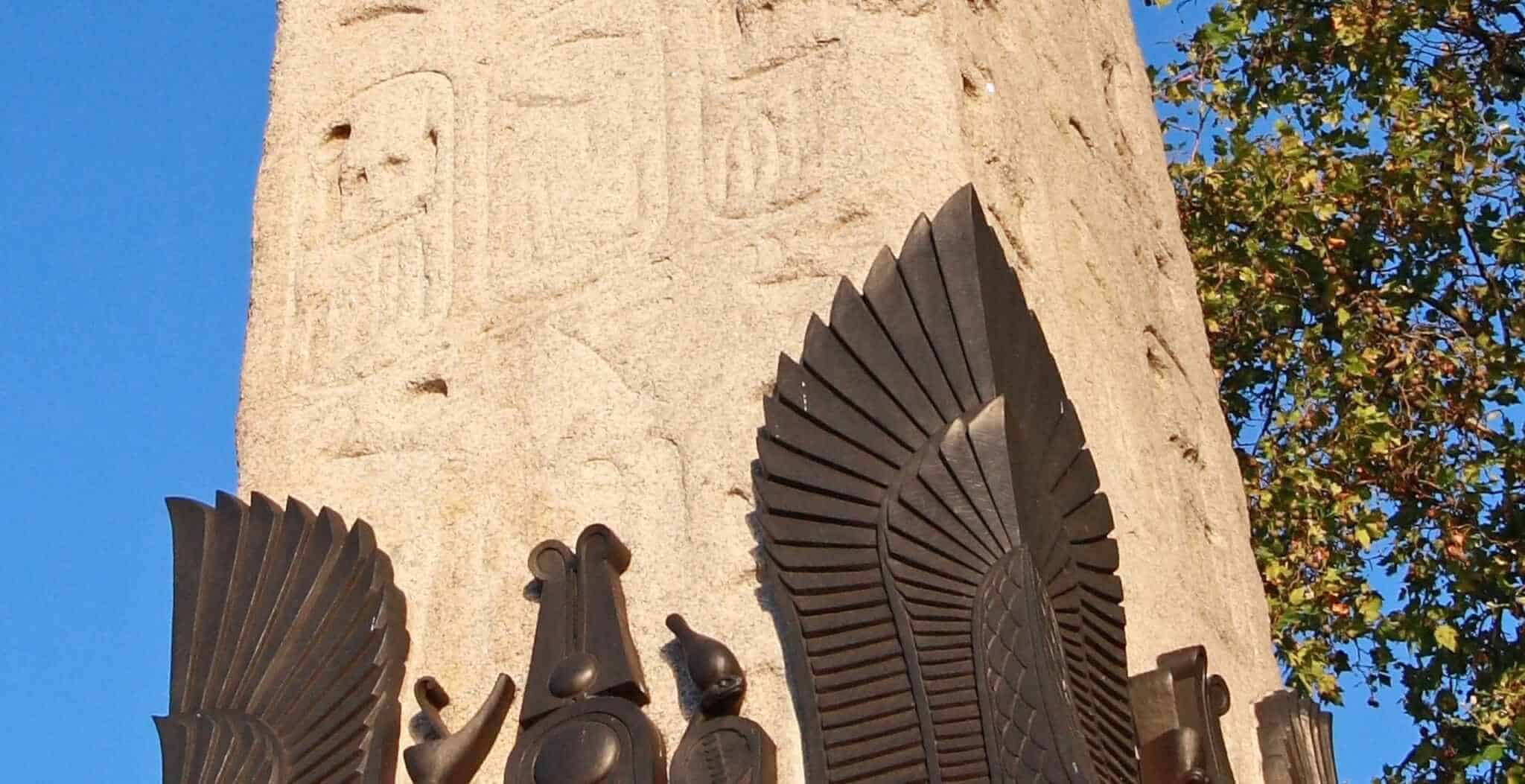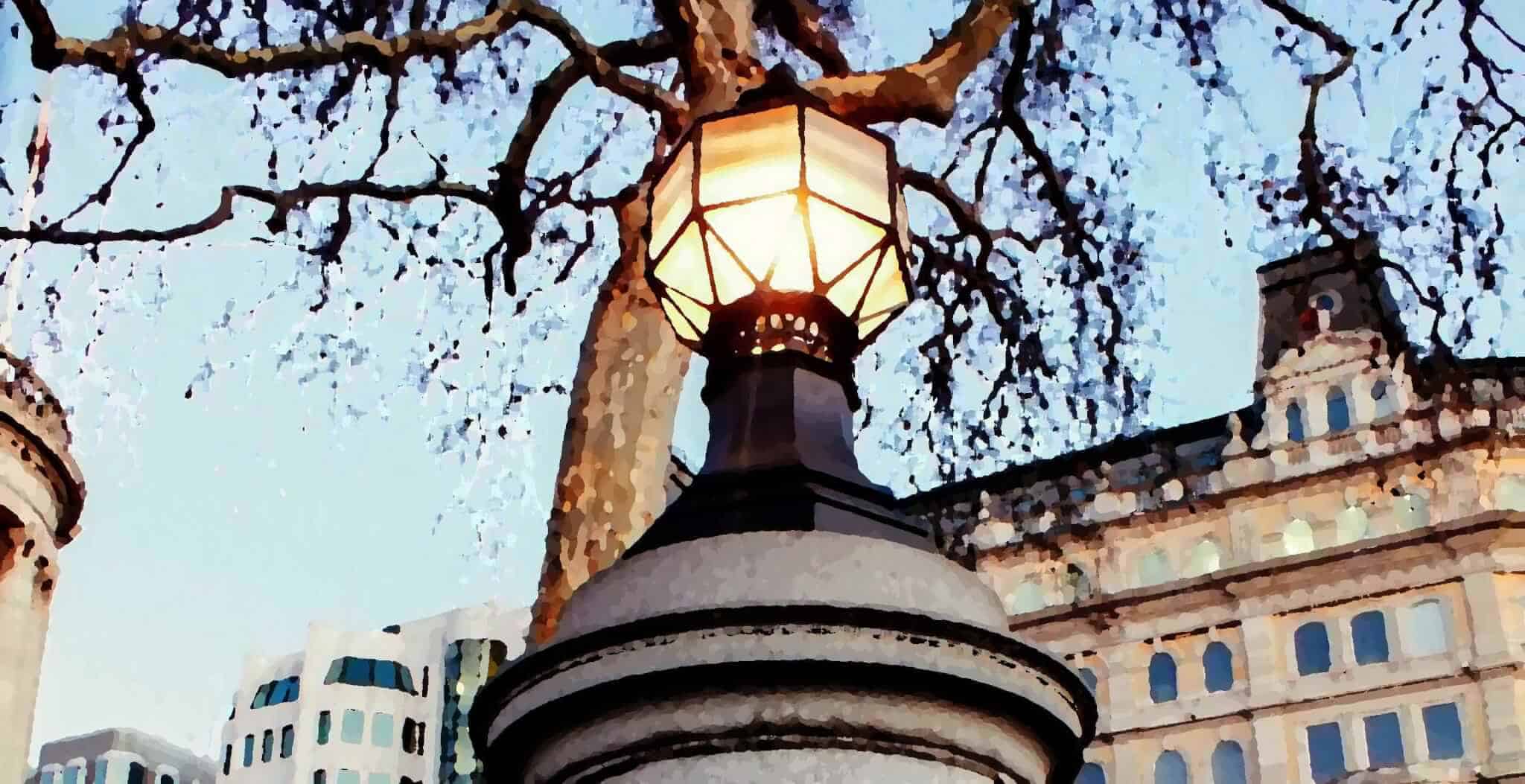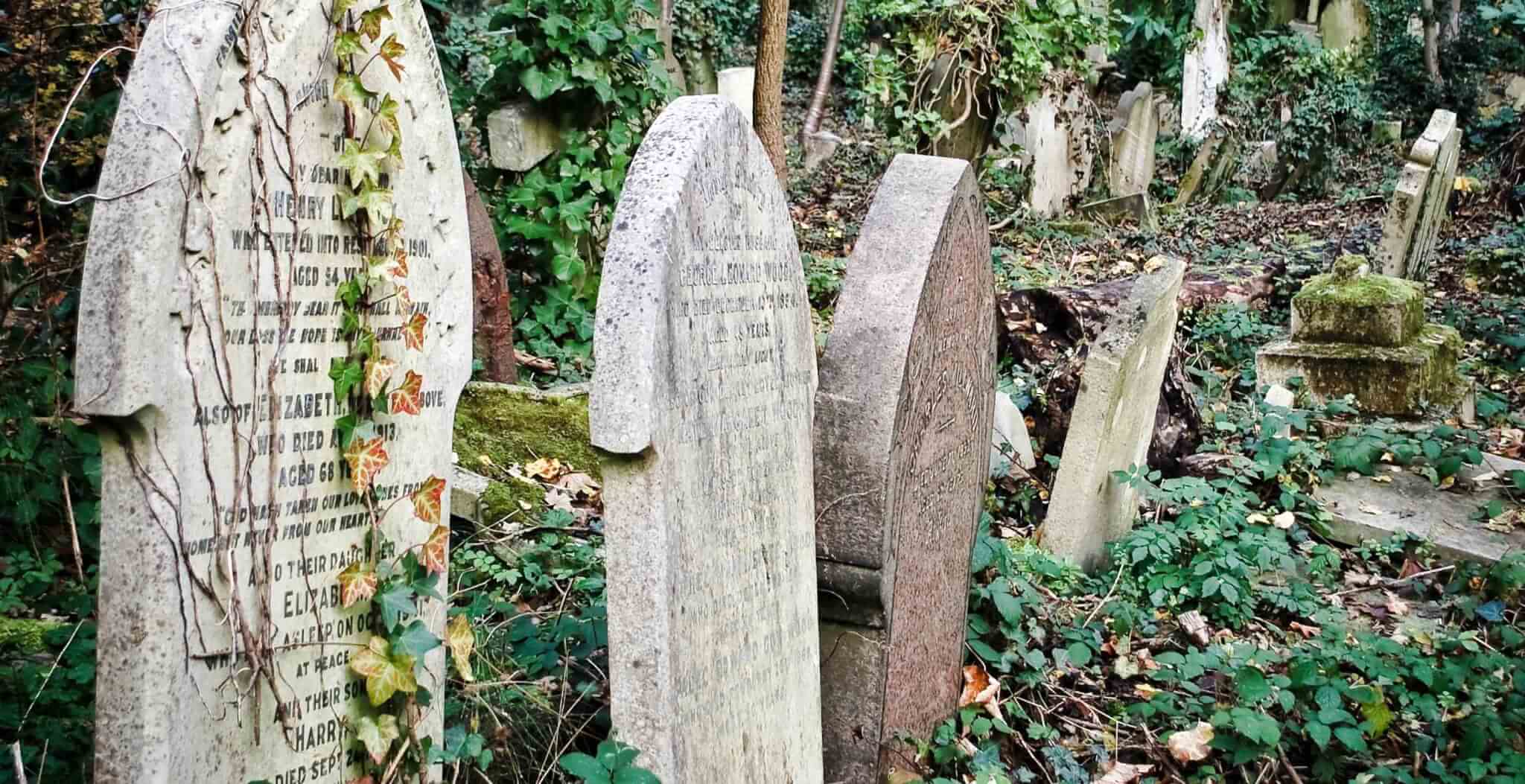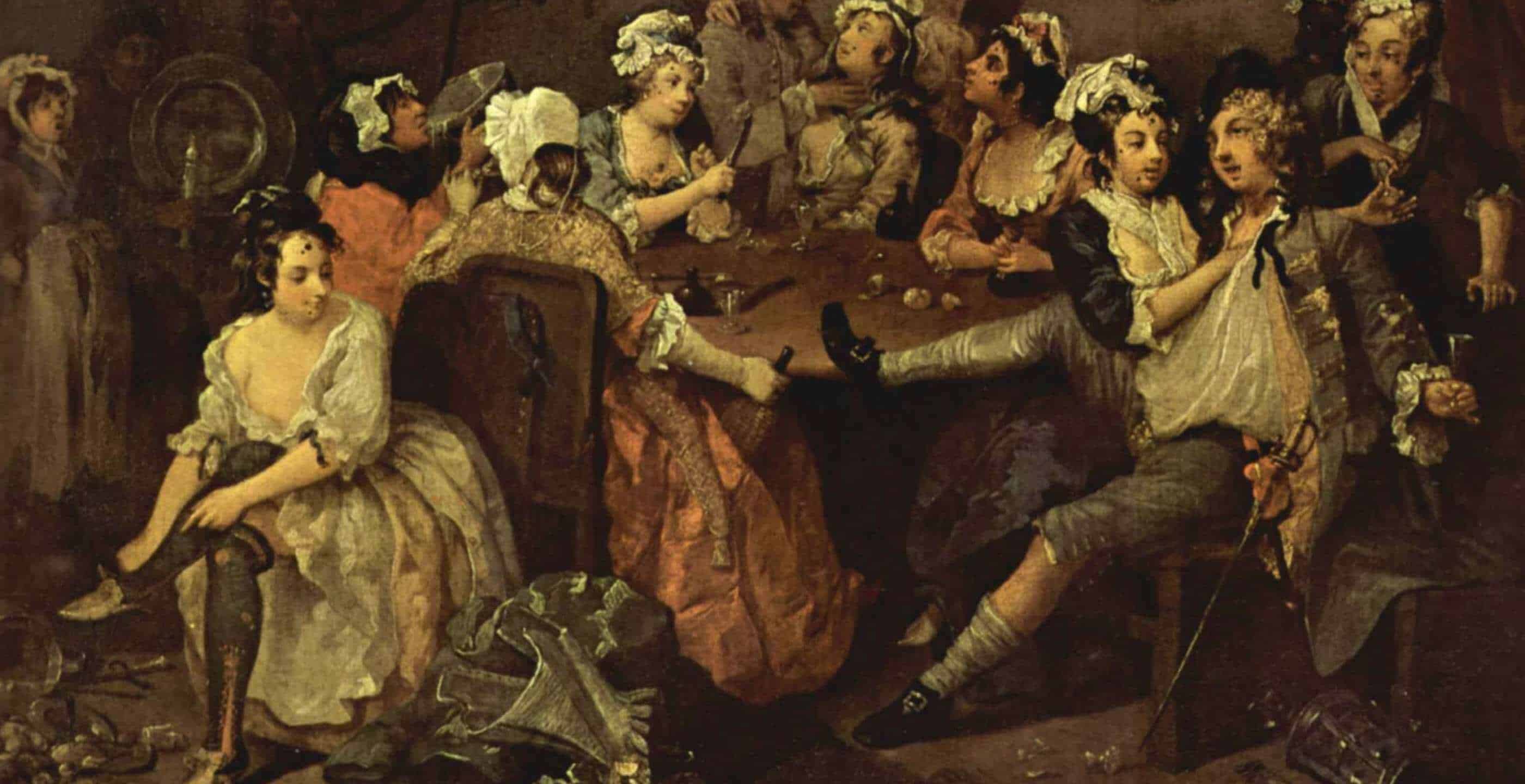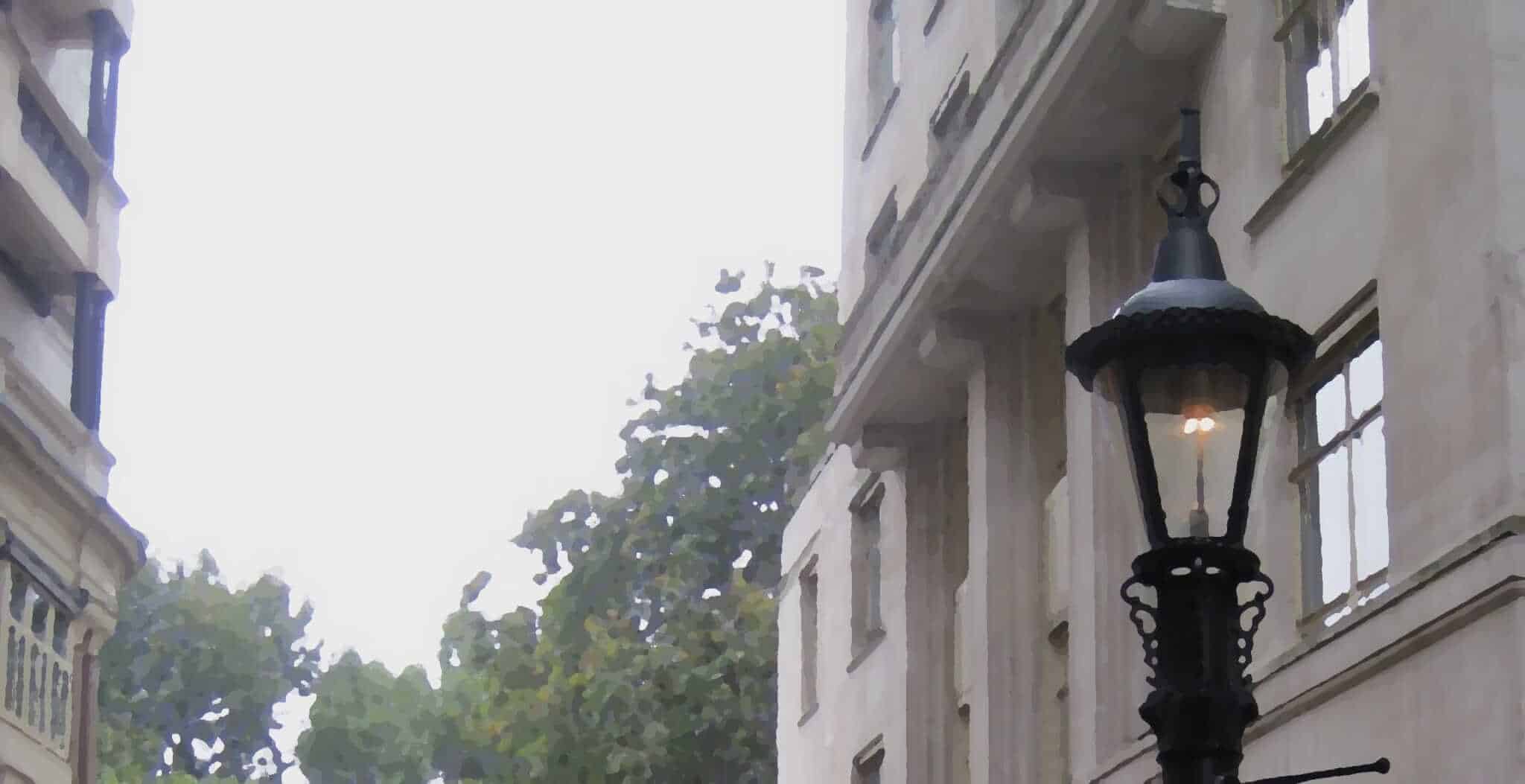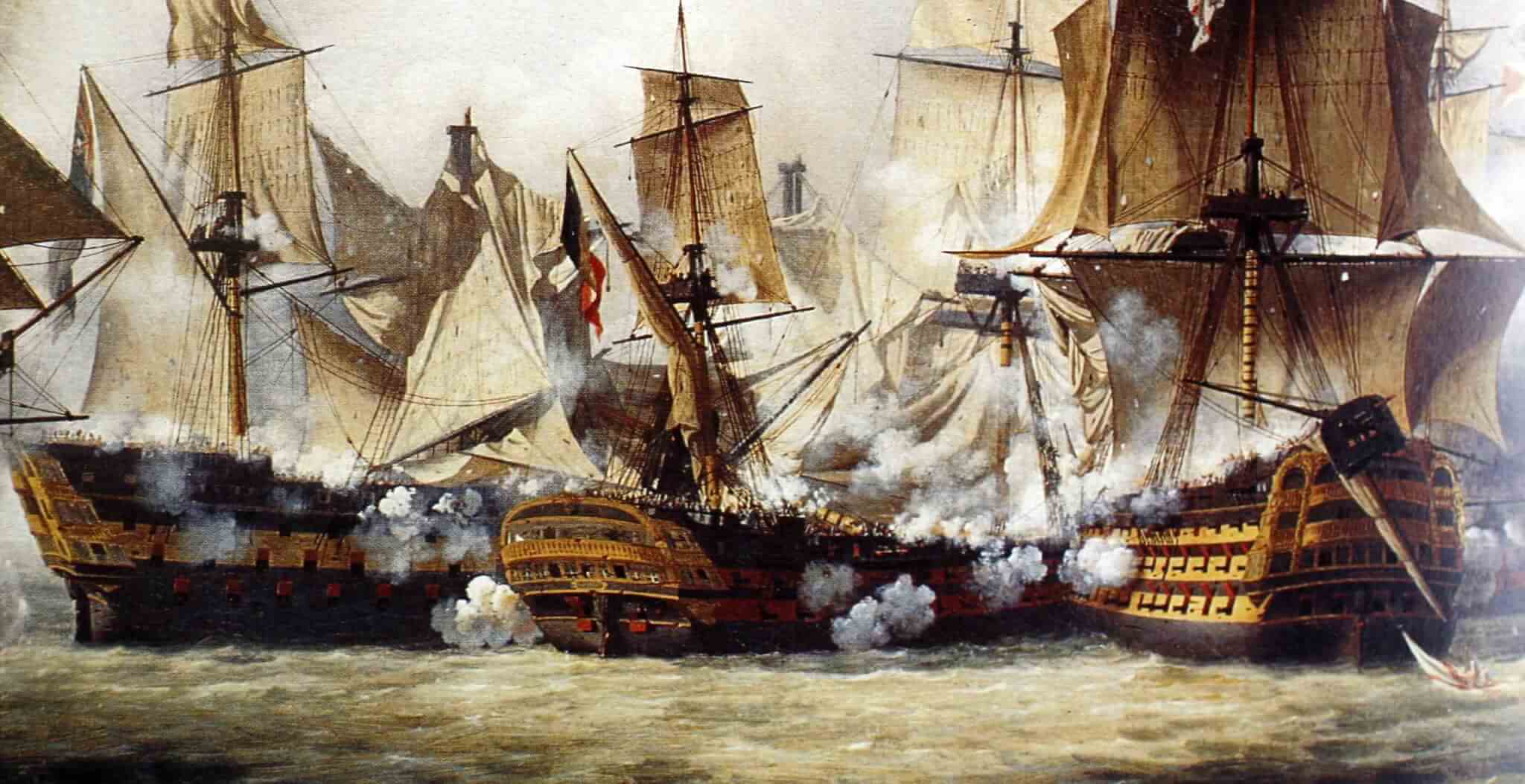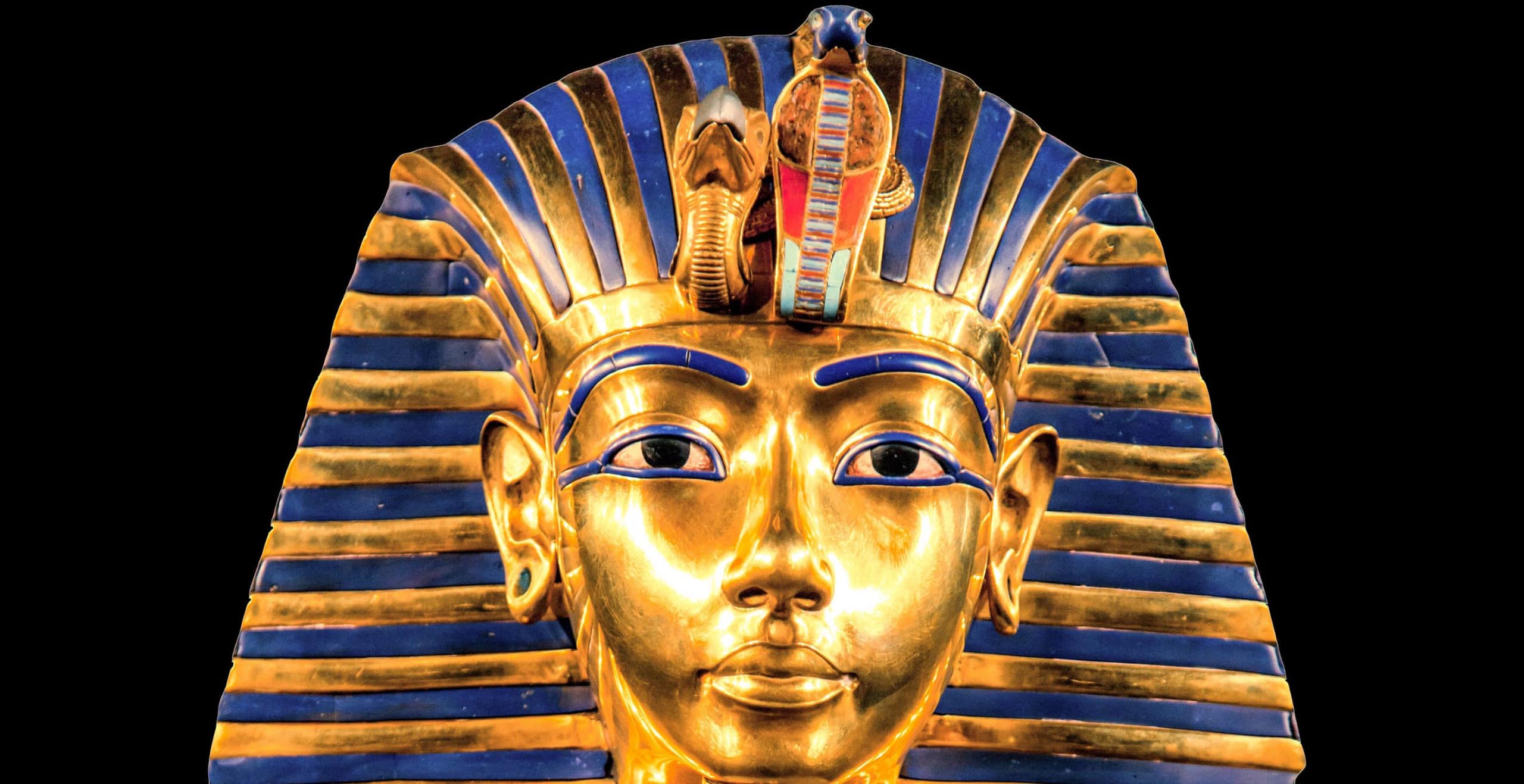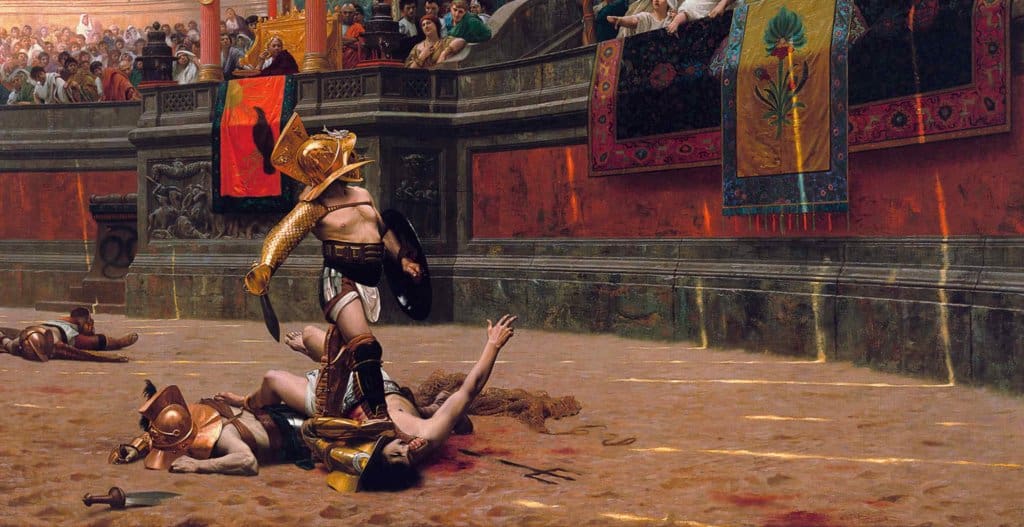Anyone visiting London for the first time and walking along the Thames Embankment may be surprised to come across an original Egyptian obelisk.
Not what you expect to see in downtown London!
This obelisk is known as Cleopatra’s Needle… though it has very little to do with Cleopatra at all.
It was made in Egypt for the Pharaoh Thotmes III in 1460 BC, making it almost 3,500 years old. It is known as Cleopatra’s Needle as it was brought to London from Alexandria, the royal city of Cleopatra.
But how did it come to be beside the Thames?
It seems Britain wanted something big and noticeable to commemorate the British victory over Napoleon, sixty-three years earlier.
The Needle arrived in England after a horrendous journey by sea in 1878.
The British public subscribed £15,000 to bring it over from Alexandria in Egypt, and waited eagerly for the ‘needle’ to arrive.
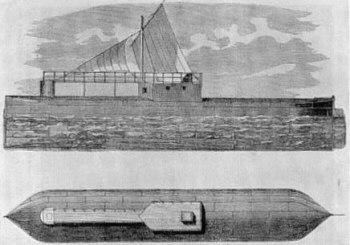
A specially designed cigar-shaped container ship, called the Cleopatra, was used to convey this priceless treasure. It was built by the Dixon brothers and when finished was an iron cylinder, 93 feet long, 15 feet wide, and was divided into ten watertight compartments. A cabin, bilge keels, bridge and rudder were riveted on and to everyone’s delight …she floated!
But on October 14th 1877 in treacherous waters off the west coast of France in the Bay of Biscay disaster stuck… the Cleopatra was in danger of sinking.
The steam-ship towing her, the Olga, sent six volunteers in a boat to take off the Cleopatra’s crew, but the boat was swamped and the volunteers drowned. The names of the men who died are commemorated on one of the plaques to be seen today at the base of the Needle – William Askin, Michael Burns, James Gardiner, William Donald, Joseph Benton and William Patan.
Eventually the Olga drew alongside and rescued Cleopatra’s five crewmen and their skipper, and cut the towrope, leaving the vessel adrift in the Bay of Biscay.
In Britain the nation held its breath… would the Cleopatra remain buoyant – if not they had wasted a lot of money.
Five days later a ship spotted the Cleopatra floating peacefully and undamaged off the northern coast of Spain, and towed her to the nearest port, Ferrol.
Following her narrow escape, another steam-ship, the Anglia, was sent to tow the Cleopatra home.
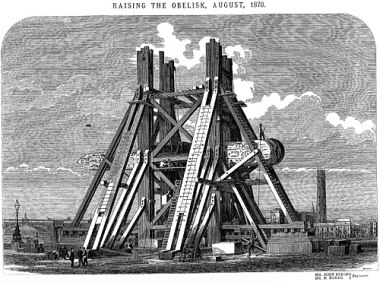
Finally in January 1878 both vessels came up the Thames and the waiting crowds cheered as artillery salvoes roared a welcome.
The ‘needle’ was winched into position on the Embankment in September 1878, to the delight of the people.
And what happened to the Cleopatra? She was sent for scrap as her job was done!
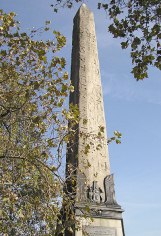 Not many people today realise what a terrible journey the ‘needle’ had, and all to commemorate British victories at the Battle of the Nile and the Battle of Alexandria… One can’t help thinking that surely some other triumphal symbol could have been placed by the Thames… something that was not so far away and difficult to bring. But then again, nothing was too much for the Victorians!
Not many people today realise what a terrible journey the ‘needle’ had, and all to commemorate British victories at the Battle of the Nile and the Battle of Alexandria… One can’t help thinking that surely some other triumphal symbol could have been placed by the Thames… something that was not so far away and difficult to bring. But then again, nothing was too much for the Victorians!
Location of Cleopatra’s Needle
Cleopatra’s Needle stands on the Thames Embankment close to the Embankment underground station. Two large bronze Sphinxes lie on either side of the Needle. These are Victorian versions of the traditional Egyptian original. The benches on the Embankment also have winged sphinxes on either side as their supports.
There are four plaques mounted round the base of the Obelisk giving a brief history of the ‘needle’ and its journey to London.
Published: 6th March 2015.
Tours of Historic London
Find out more about this great city by browsing our Selected Tours of London.
